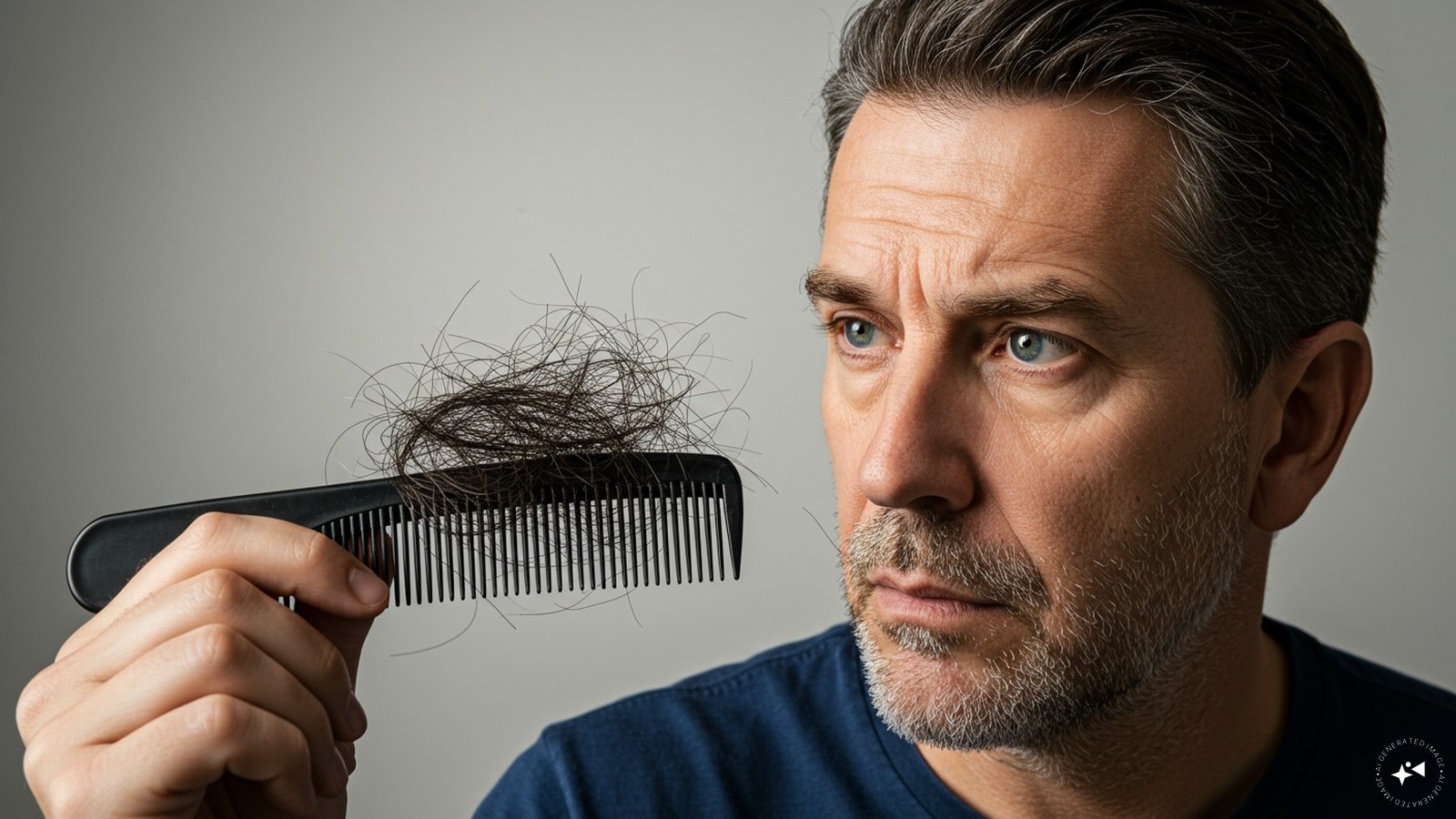Last Updated:June 08, 2025, 09:55 IST
Vitamin D stimulates and maintains healthy hair growth by nourishing hair follicles and promoting scalp health.
Vitamin D is a crucial nutrient that supports several key functions in the body. (AI Generated Image)
Vitamin D is a crucial nutrient that supports a wide range of bodily functions, from strengthening bones to enhancing immune health. It also plays an important role in maintaining healthy skin and promoting hair growth. When your body doesn’t get enough of it, whether due to limited sun exposure, poor diet, or other factors, the deficiency can reveal itself through a variety of physical symptoms.
In many cases, early warning signs appear subtly in your skin and hair. Here are some common indicators that your body may be lacking Vitamin D.
Skin
Vitamin D is essential for keeping your skin healthy and resilient. It aids in skin cell repair, supports your body’s immune response to inflammation or damage, and helps regulate how skin cells grow and function – all of which contribute to smoother, clearer, and stronger skin.
Signs of Low Vitamin D in Your Skin:
Dry and flaky skin: Without enough vitamin D, your skin may feel rough, itchy, or dehydrated.
Dull or uneven tone: Skin may appear lifeless, patchy, or tired due to impaired cell turnover.
Wounds heal slowly: Cuts, scrapes, or blemishes may take longer to heal due to slower skin cell repair.
Sensitive or irritated skin: You might notice increased redness, breakouts, or a tendency to develop rashes.
More flare-ups: Conditions like eczema and psoriasis can worsen, as vitamin D is crucial for skin immunity and inflammation control.
Hair
Vitamin D also plays a vital role in maintaining thick, healthy hair. It helps stimulate hair follicles – the small structures in the scalp responsible for hair growth. When your body is deficient in vitamin D, these follicles can become inactive or underperform, which may result in thinning hair or noticeable hair loss over time.
Common Hair Problems Linked to Vitamin D Deficiency:
Hair Loss: A lack of vitamin D may contribute to hair loss conditions such as alopecia areata, an autoimmune disorder that causes patchy bald spots on the scalp or other areas of the body.
Hair Thinning: Low vitamin D levels can disrupt the hair growth cycle by shortening the anagen (growth) phase. This leads to gradual thinning, often noticeable as a widening hair part or a receding hairline.
Slower Hair Growth: Vitamin D deficiency can slow down the overall growth rate of hair. Strands may appear dull, flat, or lacking volume due to inactive or underperforming follicles.
Studies have found that people with lower vitamin D levels often report increased hair fall and find it harder to maintain thick, healthy hair. Although factors like genetics and diet also influence hair health, vitamin D is crucial for keeping follicles functioning properly.
How to Boost Vitamin D Levels for Healthier Hair and Skin
Get safe sunlight: Aim for 10–30 minutes of early morning sun (around 7–8 AM) on bare hands and feet. Keep your face protected to avoid UV damage.
Eat vitamin D-rich foods: Add salmon, mackerel, egg yolks, fortified dairy, and mushrooms to your meals to naturally raise vitamin D.
Consider supplements: If you’re deficient or at risk, talk to a doctor about taking vitamin D supplements to correct low levels safely.
Focus on overall diet: A balanced, nutrient-rich diet not only improves vitamin D absorption but also promotes stronger hair and healthier skin overall.
- Location :
Delhi, India, India
- First Published:
#Hair #Fall #Dry #Skin #Hidden #Signs #Vitamin


